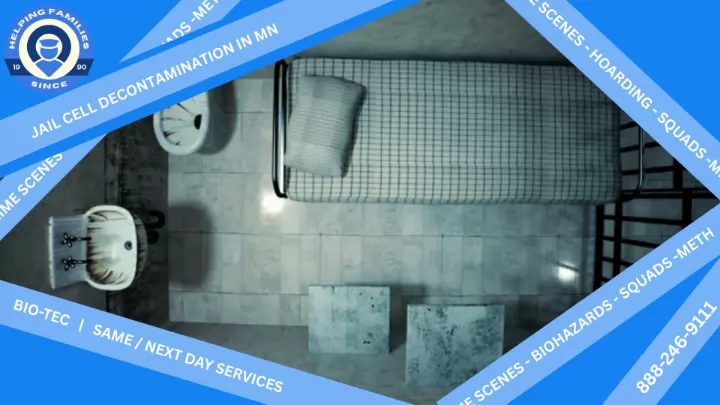How to Remove Decomposition Smells? | Same Day Professional Odor Cleanup Table of Contents Introduction Why Removing Decomposition Smells is Critical What Causes Decomposition Odor? Can You Remove Decomposition Smells Yourself? Why Professional Odor Removal is Essential Our Step-by-Step Decomposition Odor Removal Process Health Risks Associated with Lingering Decomposition Odor Case Study: Rapid Decomposition Cleanup in a Residential Property Frequently Asked Questions Conclusion A Startling Truth About Decomposition Odors Did you know that the human body begins decomposing within minutes a

How To Remove Decomposition Smells
How to Remove Decomposition Smells? | Same Day Professional Odor Cleanup Table of Contents ...
Why is crime scene cleanup necessary?
It prevents the spread of infectious diseases, mitigates health risks, and ensures that affected areas can be safely reoccupied after a traumatic incident.
How long does mold testing take?
Lab analysis usually takes 2-5 days after sample collection.
What happens if biohazards penetrate into storage compartments under the rear seats?
Storage compartments are emptied, cleaned, and sanitized, ensuring all biohazards are removed.
Can tear gas residue cause long-term health issues?
Prolonged exposure to tear gas residue can lead to chronic respiratory problems, skin conditions, and eye damage. Professional cleanup minimizes these risks by removing harmful residues.
What is meth lab testing?
Meth lab testing involves assessing a property for contamination caused by the production of methamphetamine. This process typically includes surface sampling, air quality testing, and sometimes soil or water testing. Certified professionals use specialized equipment to detect hazardous chemicals left behind. Testing ensures the safety of future occupants and compliance with local regulations.
What are the dangers of DIY suicide cleanup?
Attempting DIY suicide cleanup presents numerous significant dangers, making professional intervention almost universally recommended. The most immediate and serious danger is **exposure to biohazards**. Blood, bodily fluids, and other organic matter at the scene can contain dangerous pathogens such as HIV, Hepatitis B and C, MRSA, and other bacteria and viruses. Without proper Personal Protective Equipment (PPE) � such as respirators, full body suits, gloves, and eye protection � individuals risk direct skin contact, inhalation, or ingestion of these infectious agents, leading to potential illness or disease transmission. Beyond the biological risks, theres the danger of **improper waste disposal**. Biohazardous materials cannot be disposed of in regular household trash; they are considered regulated medical waste and require specific, legally compliant disposal procedures to prevent environmental contamination and public health risks. Mismanagement can lead to fines and legal penalties. Furthermore, DIY efforts are often **ineffective at complete remediation**. Blood and fluids can seep into porous materials (e.g., carpet, subflooring, drywall, furniture), creating hidden reservoirs of pathogens and persistent, deeply embedded odors that conventional cleaning methods cannot eliminate. Incomplete cleanup can result in lingering health hazards and a pervasive smell that renders the space uninhabitable. Finally, and perhaps most importantly, the **psychological and emotional trauma** of cleaning up after a suicide is immense. Confronting the physical aftermath of such a tragic event can exacerbate grief, lead to symptoms of PTSD, anxiety, depression, and hinder the grieving process. Professionals handle the physical cleanup discreetly and efficiently, protecting the mental well-being of those affected. For these reasons, attempting DIY cleanup is a hazardous undertaking that should be avoided.
How long does the odor removal process take?
The duration of the odor removal process varies depending on factors such as the severity of the odor, the size of the property, and the techniques required. Simple cases, like pet odors, may be resolved within a few hours, while more complex issues, such as mold or smoke damage, can take several days. Professionals provide an estimated timeline after assessing the situation, ensuring transparency and efficient service. Scheduling flexibility allows treatments to be conducted at convenient times for clients, minimizing disruption.
Where can I find a certified mold testing professional?
Look for certified inspectors through organizations like the IICRC or AIHA.
What insurance coverage is needed for crime scene cleanup services?
What defines the Active Decay stage?
In Active Decay, the body loses mass as tissues break down. Maggots and scavengers consume the remains, and fluids seep into the surrounding environment, affecting vegetation.
